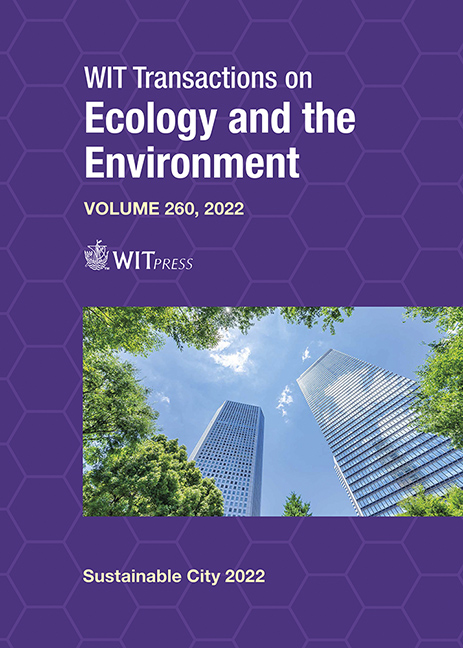CLASSIFICATION OF PHOTOVOLTAICS IN BUILDINGS (BAPV AND BIPV): ILLUSTRATED WITH ZERO-ENERGY HOUSES
Price
Free (open access)
Transaction
Volume
260
Pages
14
Page Range
37 - 50
Published
2022
Paper DOI
10.2495/SC220041
Copyright
Author(s)
EDWIN RODRIGUEZ-UBINAS, ESRA TREPC, NOURA ALHAMMADI
Abstract
Zero-energy buildings are one of the most effective decarbonization strategies for cities. They are highly efficient buildings that can generate enough energy to meet their demand using renewables. Photovoltaics (PV) is a cost-effective way of generating renewable energy in buildings. Additionally, PV modules can be more than generation systems and be an essential part of the buildings, contributing to their appearance, thermal performance, and daylight harvesting. New policies and regulations around the world encourage the use of PV and bring more flexibility for their integration in buildings. Therefore, it is fundamental for regulators, researchers, and building professionals, to have a comprehensive PV in buildings categorization. As a response, the objective of this work was to develop a classification for building attached photovoltaics (BAPV) and building integrated photovoltaics (BIPV). The classifications resulted from an extensive literature review that helped to identify relevant aspects, criteria, and gaps in previous categorizations. It considers the application type, location, opacity, accessibility from the inside, and heat dissipation (a missing parameter in prior works). After summarizing the existing categories, describing the findings, and explaining the proposed classifications, the authors illustrated them using zero-energy houses.
Keywords
photovoltaics, photovoltaics ventilation, BAPV, BIPV, zero-energy buildings, solar decathlon





